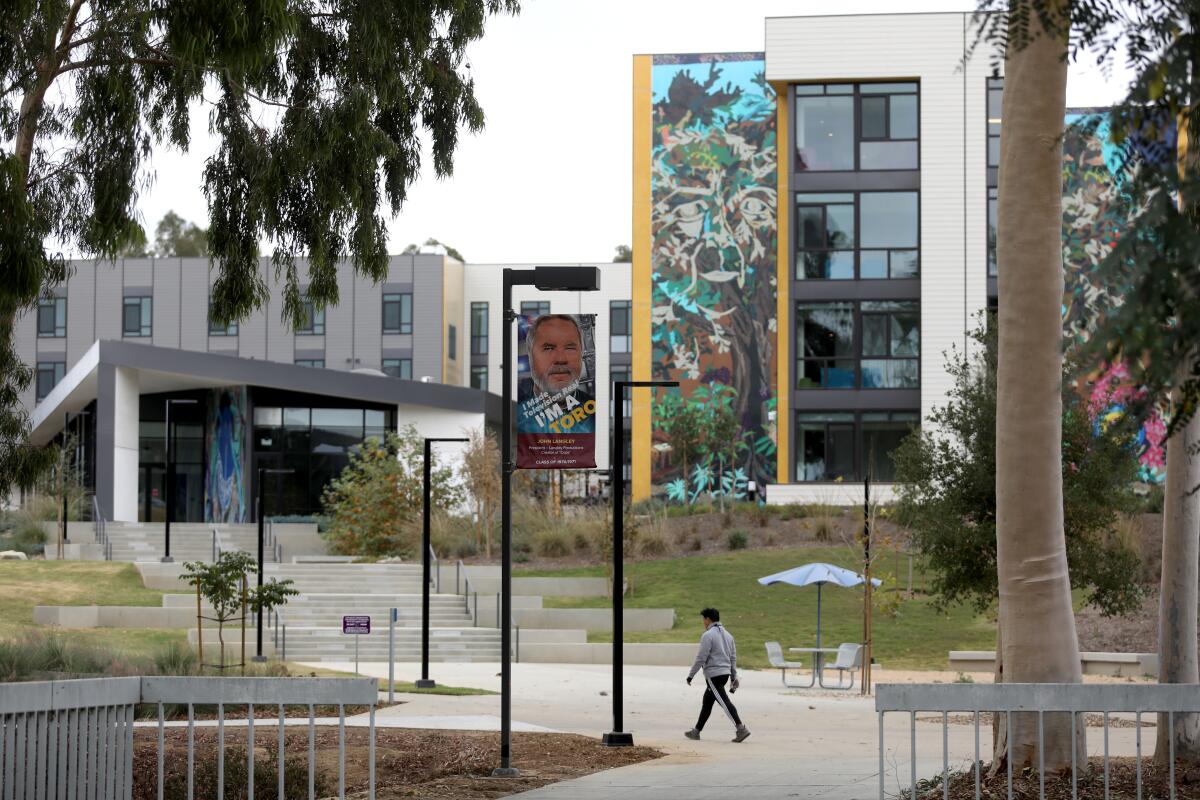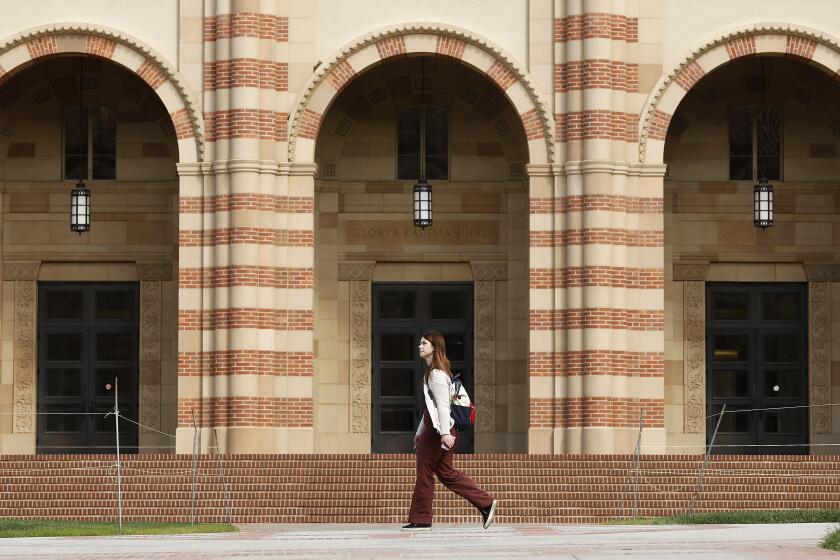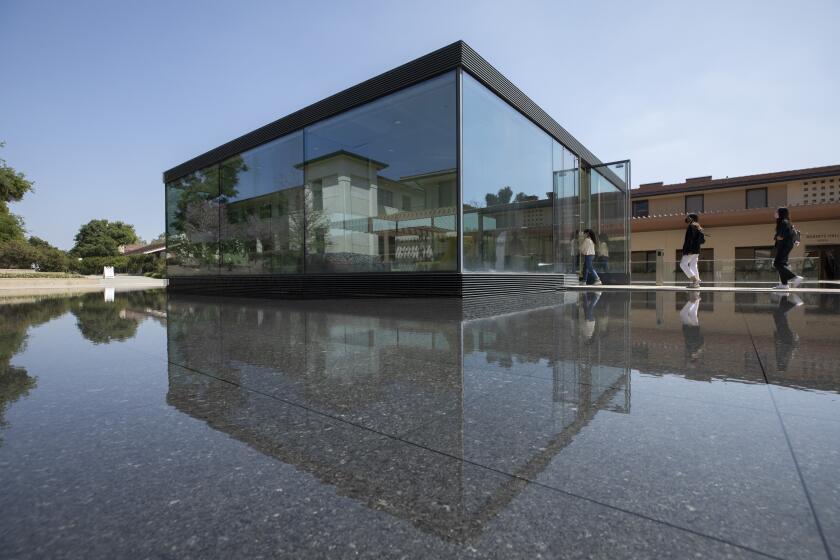Op-Ed: Are the U.S. News college rankings a joke?

- Share via
I didn’t go to an Ivy League college. In fact, I never even thought of applying, and you probably didn’t either.
This week, U.S. News & World Report decided to demote Columbia University from No. 2 for best university in America to No. 18 after the school was accused of providing false information to boost its ranking. What does it say about the value of such rankings when a supposed measure of quality can slip overnight?
In August, Secretary of Education Miguel Cardona bluntly called popular college rankings “a joke.” Why?
Probably because they celebrate institutions that represent less than 1% of the college-going population. The top 10 “best” colleges have billions of endowment dollars, are more exclusive than inclusive and reject almost every student who applies. They serve the few and fortunate and do more to reinforce socioeconomic inequality than to mitigate it.
Until 1970, tuition was free at the University of California. That’s not coming back, but we mustn’t lose sight of accessibility and affordability.
If you happen to be in the 1% of students who apply and eventually enroll in one of those schools, the U.S. News ranking is for you! The children of the top 1% of earners are 77 times more likely to enroll in an Ivy League school than all students whose parents are in the bottom income quintile. But, if you’re part of the other 99% of prospective students, you’ll likely be considering other options.
Luckily for you, there are tons of great colleges — most of which don’t make the U.S. News list at all. Yet they’re actually closer to serving the true purpose of higher education.
Here’s the question we should be asking about higher education: Do colleges exist mainly to serve the very few and the overwhelmingly wealthy? Or, is their purpose to lift the current generation up, provide its members with the necessary skills to compete in today’s workforce and leave them better off than their parents?
If you’re a prospective college student, it’s probably the latter mission that speaks most to you.
To help students and their families make decisions that reflect what they want, we need to evaluate institutions in a different way. This year, I released an Economic Mobility Index on colleges with Third Way, a national think tank.
It works like this. Rather than giving substantial weight for reputation and selectivity, the EMI gives more weight to an institution’s record in enrolling a larger proportion of students from lower- and moderate-income backgrounds in comparison with other schools. The index also evaluates colleges on how well they serve these students. One key measure is the return on investment that the average low-income student gets from attending a particular institution.
To determine this, we looked at the time it takes students to recoup their educational costs based on the earnings boost they obtain by attending the institution — which is the additional income they are making relative to their peers who have obtained a high school diploma but have no college experience. The data show that many colleges provide low-income students (those from families making $30,000 or less) enough of an earnings boost, or premium, that it allows them to pay down their higher education costs within five years or less.
A university president says colleges with large endowments need to commit to meeting the financial needs of every student they admit.
If an institution scores high on the index, that indicates it enrolls a socioeconomically diverse student body, provides the students with an affordable education and produces a strong earnings premium for those who attend.
What happens to those exclusive institutions that top the U.S. News list year after year — such as Harvard, Stanford and Yale — when measured on the Economic Mobility Index? They drop to 847th, 548th and 295th, respectively.
Instead, many Latino-serving institutions rise to the top of the Economic Mobility Index, including many in the California State University system. In fact, Cal State Los Angeles, Cal State Dominguez Hills and Cal State Bakersfield are all in the top five out of 1,320 four-year institutions nationwide. The flagship University of California campuses did worse: UC Berkeley is ranked at 199, UCLA at 115.
In each of these three Cal State schools, more than 60% of the students come from lower-income backgrounds — and each enrolls more lower-income students than Harvard, Stanford and Yale combined. They also cost less than $20,000 for a bachelor’s degree and provide students an earnings premium of $15,000 to $20,000. This places them above 94% of institutions nationwide in terms of the return on investment they provide for this income group.
Are the U.S. News rankings a joke? I don’t know, but they certainly don’t prioritize the qualities of institutions that are best at making students better off. Instead, those traditional rankings reinforce the idea of prestige at schools that provide almost no opportunity for economic mobility.
If the purpose of higher education is to lift the next generation up, it’s the institutions that are providing economic mobility that truly deliver on that promise. And it’s about time we start recognizing them.
Michael Itzkowitz is a senior fellow at Third Way, a think tank in Washington, D.C. He served as the director of the Department of Education’s College Scorecard during the Obama administration.
More to Read
A cure for the common opinion
Get thought-provoking perspectives with our weekly newsletter.
You may occasionally receive promotional content from the Los Angeles Times.












